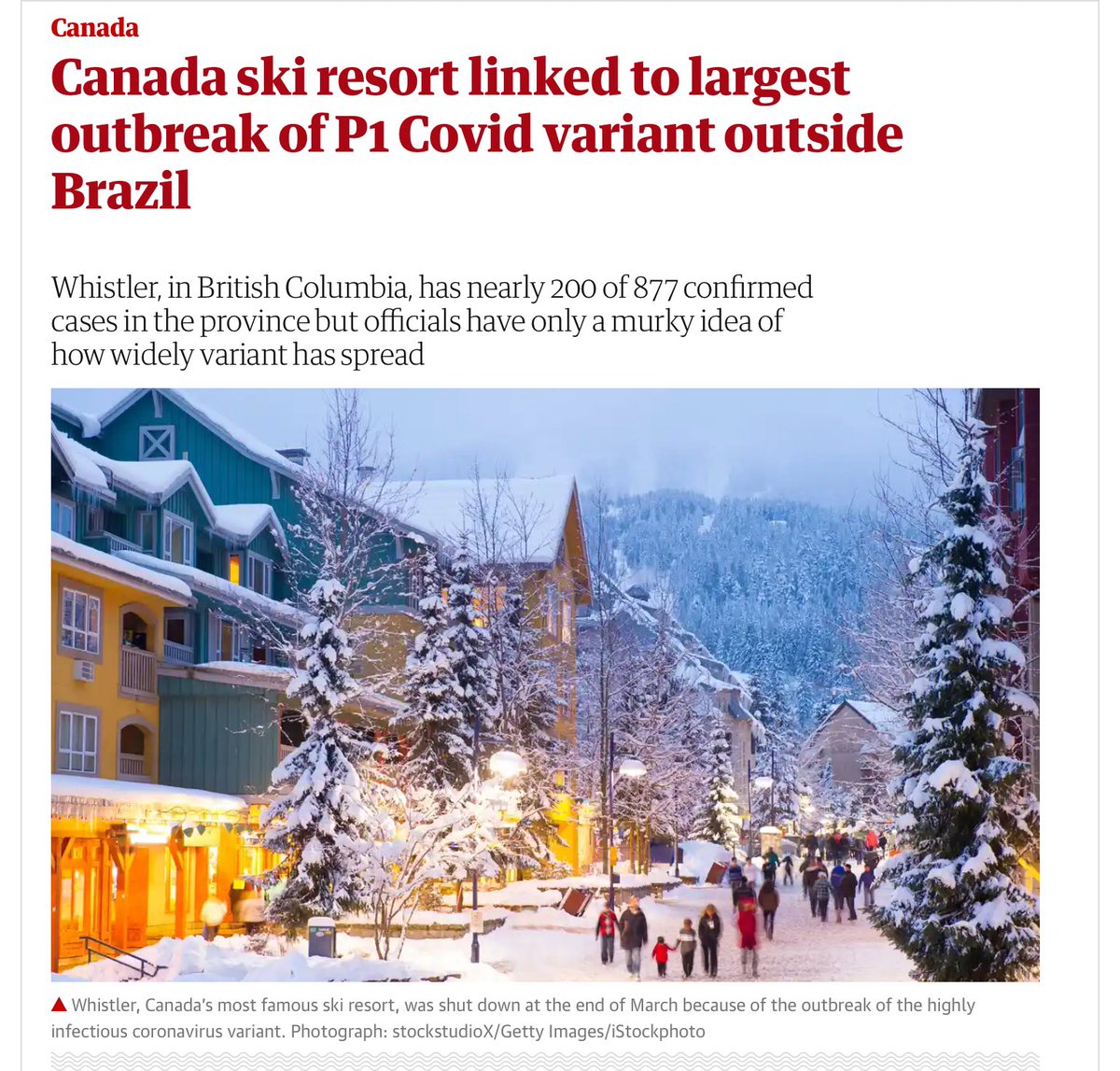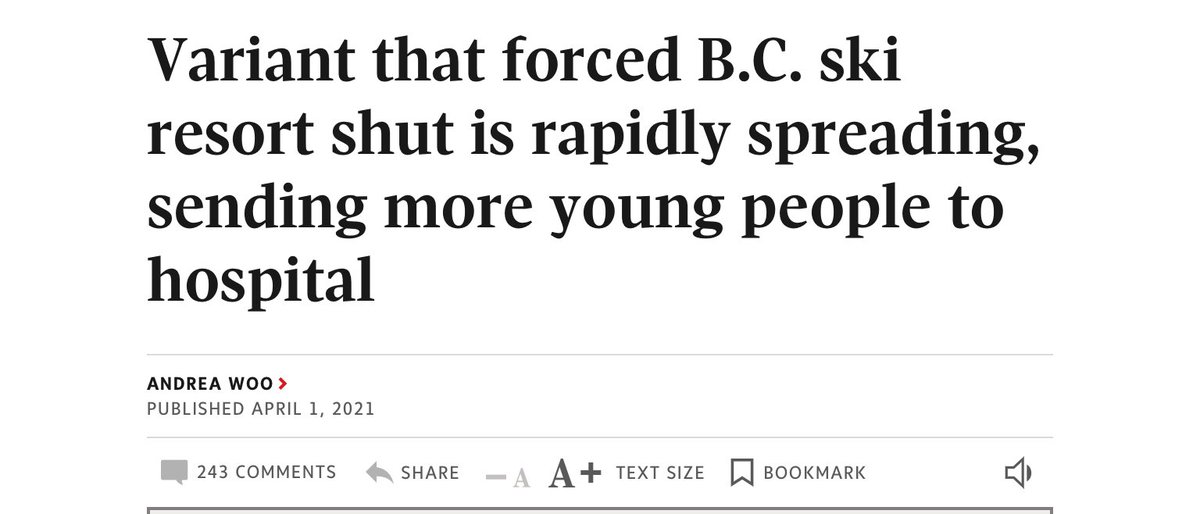The Guardian has published a story about P1 variants in Whistler and (some) people are using it to dunk on B.C. media as if the issue hasn’t been covered. That isn’t true but I also want to talk about some of the dynamics of this that go into local vs national vs int’l reporting
I’ve seen this happen so many times: Local media is covering an issue for days, weeks, even months. Then some big outlet does a single story about it and a bunch of people go “Why hasn’t this been covered by local media?”
I’m not laying blame on anyone here: We all miss stories
I’m not laying blame on anyone here: We all miss stories
There are three main issues that I think go into this dynamic:
1. Source
2. Framing
3. Timing
1. Source
2. Framing
3. Timing
Source is simple. People will perk up when they see their city/province mentioned somewhere it isn’t regularly. The New York Times, the Guardian, CNN. More likely to click to see what they are telling the world than if it’s a source they see talking about their community daily
That has a network effect. If CNN does a story about, say, Red Deer, even if it’s nothing people in Red Deer don’t already know, you are going to have a bunch of people there sharing the article going “look what CNN has to say about Red Deer” or “Even on CNN!” More ppl see it
So then folks who may not have been paying attention to the story, for whatever reason, are more likely to see it for the first time. That& #39;s source. Next is framing
This is the first time the Guardian has covered this story. They are coming at it with fresh eyes, and they are assuming (correctly) most of their audience is, as well. So they, smartly, step back and say "how do we draw the most people into this" and come up with a headline..
.. lede and overall narrative that is more catchy and compelling than if you are a reporter who has been covering this daily, and you are assuming your audience has been following along.
More to the point, the local news is covering this day-by-day and so the story is broken up into parts as new info becomes available. The larger news source is doing this once, so they put all the info from that daily coverage into their piece. This makes it more readable
Think of documentaries based on current events: they often have same info you would have gotten from reading news reports. But they frame it in a more cohesive, single-packahe narrative. It& #39;s also what shows like John Oliver& #39;s do. Put a bunch of headlines together in a new way
Again, this is smart. I do this sometimes, when putting together a story I& #39;ve been covering on local radio for a web piece that will be hitting new audiences. And it works: New people pay attention, even those who live in the city you are covering
(as a sidebar, I think it& #39;s good practice for local reporters to occasionally put together their own feature piece on a story they& #39;ve been covering)
Third is timing. This one can be the most frustrating, and I& #39;ve seen it often: Someone is first to a story but for whatever reason it doesn& #39;t get traction. Then, 2 or 3 weeks later, other media sources pick up on it — sometimes citing the local, sometimes not — and it takes off
Often the framing or the network effects play into this: a bigger source with a juicer headline is more likely to get the clicks and shares. I& #39;ve been both the recipient and benefactor of this dynamic, as well as all the others
I don& #39;t really have lessons here, aside from it& #39;s smart to try to frame your stories in a compelling, understandable ways instead of always doing the daily, piecemeal updates and process-y headlines. But ultimately, different ppl read different things in different ways

 Read on Twitter
Read on Twitter





